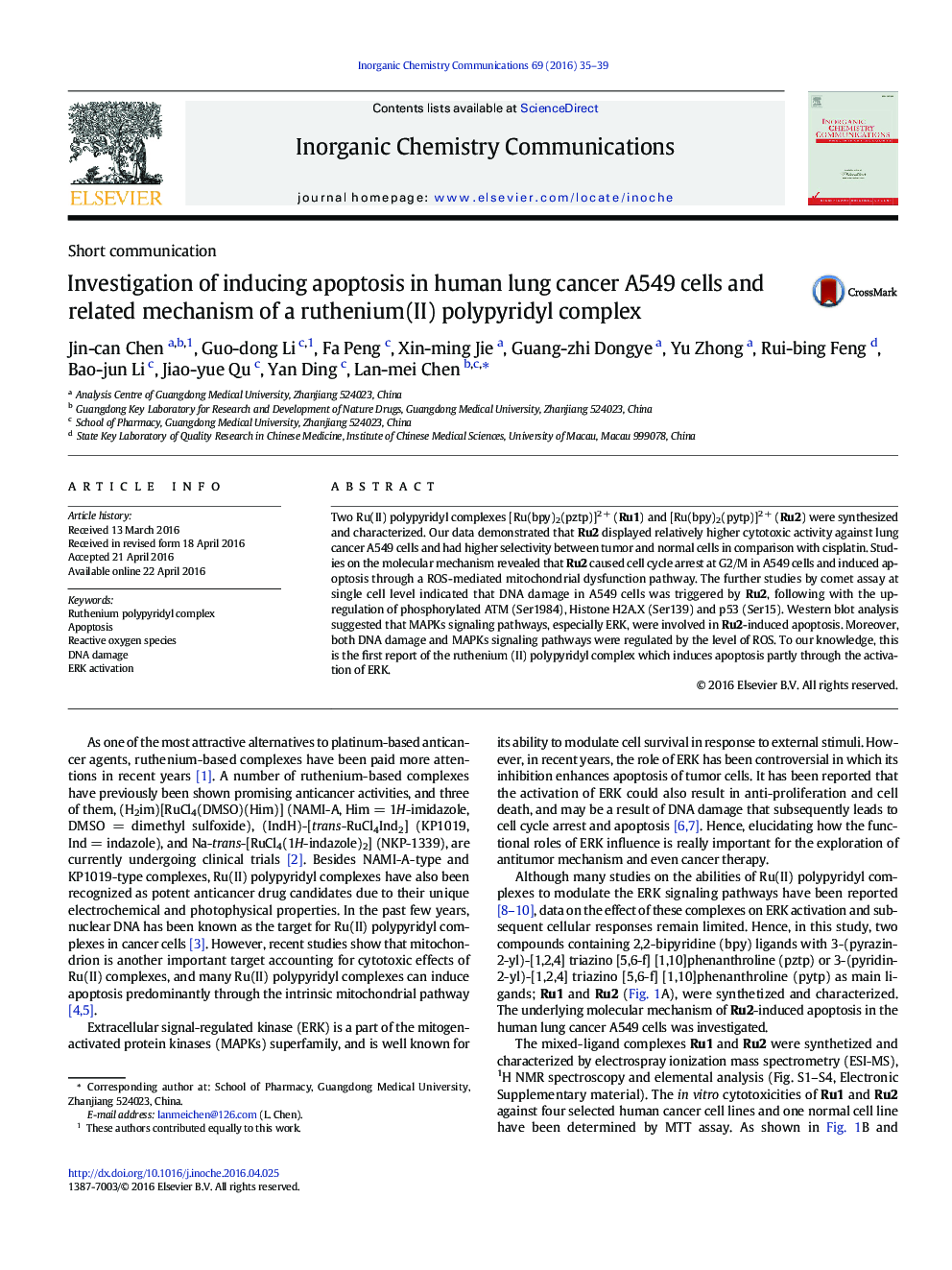| Article ID | Journal | Published Year | Pages | File Type |
|---|---|---|---|---|
| 1303156 | Inorganic Chemistry Communications | 2016 | 5 Pages |
•A Ru(II) complex [Ru(bpy)2(pytp)]2 + (Ru2) was synthesized and characterized.•The cell cycle arrest and apoptosis-inducing mechanism of Ru2 were explored.•ROS-mediated mitochondrial dysfunction and DNA damage were involved in the apoptosis.•ERK activation promoted Ru2-induced apoptosis in A549 cells.
Two Ru(II) polypyridyl complexes [Ru(bpy)2(pztp)]2 + (Ru1) and [Ru(bpy)2(pytp)]2 + (Ru2) were synthesized and characterized. Our data demonstrated that Ru2 displayed relatively higher cytotoxic activity against lung cancer A549 cells and had higher selectivity between tumor and normal cells in comparison with cisplatin. Studies on the molecular mechanism revealed that Ru2 caused cell cycle arrest at G2/M in A549 cells and induced apoptosis through a ROS-mediated mitochondrial dysfunction pathway. The further studies by comet assay at single cell level indicated that DNA damage in A549 cells was triggered by Ru2, following with the up-regulation of phosphorylated ATM (Ser1984), Histone H2A.X (Ser139) and p53 (Ser15). Western blot analysis suggested that MAPKs signaling pathways, especially ERK, were involved in Ru2-induced apoptosis. Moreover, both DNA damage and MAPKs signaling pathways were regulated by the level of ROS. To our knowledge, this is the first report of the ruthenium (II) polypyridyl complex which induces apoptosis partly through the activation of ERK.
Graphical abstractROS-mediated mitochondrial dysfunction, DNA damage and MAPKs signaling pathways were involved in the apoptosis in human lung cancer A549 cells induced by Ru(II) polypyridyl complex Ru2. Interestingly, ERK activation promotes Ru2-triggered apoptosis in A549 cells.Figure optionsDownload full-size imageDownload as PowerPoint slide
